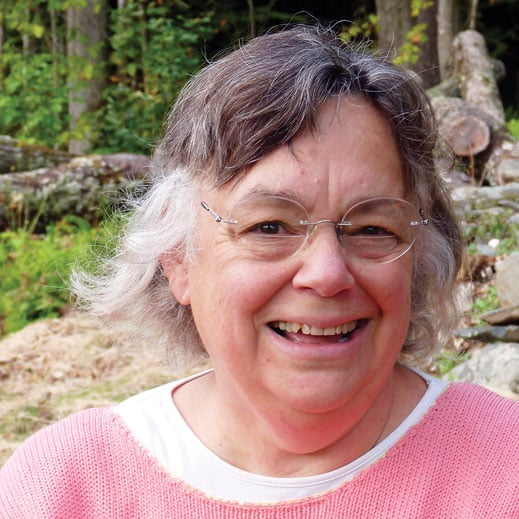Ruth Beckley McDowell ’67
Her work graces museums, galleries, and private collections all over the world. She has published 10 books on the technique of art quilting: stitching together layers of cloth into a kind of painting made of fabric. And while she was at MIT, Ruth Beckley McDowell pieced together the Institute’s first varsity sport for women.


McDowell had aimed to be an architect, and that narrowed her college choices. “If you wanted to stay in New England, there was MIT and Yale, and Yale didn’t take women,” she recalls. Plus, her father, Lawrence Beckley ’42, was an executive officer at MIT’s Center for Space Research. However, during McDowell’s undergrad years, the Institute changed the architecture course from a five-year bachelor’s degree to a six-year bachelor’s and master’s program. “I decided four years was enough,” McDowell admits. Having completed the core courses, she changed her major to art and design.
Outside of class, McDowell was drawn to the river. “That was one of those wonderful things about the Institute—you could go across the street and go sailing any time you wanted to, April to November,” she says. She helped organize a women’s sailing team that raced against Radcliffe, Brown, Tufts, and BU. “We did quite well, and we requested varsity status. There was some opposition,” she says. But they persevered and earned the support of the school.
She married and then set about restoring a Greek Revival house and garden in her hometown of Winchester, Massachusetts. After a brief career in scientific illustration, McDowell turned her focus to the emerging art-quilt form. She created intricate nature scenes with fabrics that had been designed for dresses or shirts, as well as antique fabrics and textiles from other cultures. “I really enjoyed the geometry—figuring out how to put the pieces together, just like a building,” she says. She had two daughters, got divorced, and began teaching quilting workshops across the country and in Canada, Japan, and New Zealand. She loved figuring out how to explain the craft to people of all ages and levels of experience. After all, “MIT is about teaching people how to think and solve problems,” she says.
McDowell now lives in rural Colrain, Massachusetts. Her daughters are artists as well, and she has one granddaughter. She recently retired from teaching and writing and is delighted to have the freedom to pursue crafts without the pressure to produce income. “I just sit here and look at the trees,” she says. “The air is like wine, and the sky is really dark so the stars shine out.”
Keep Reading
Most Popular
Large language models can do jaw-dropping things. But nobody knows exactly why.
And that's a problem. Figuring it out is one of the biggest scientific puzzles of our time and a crucial step towards controlling more powerful future models.
How scientists traced a mysterious covid case back to six toilets
When wastewater surveillance turns into a hunt for a single infected individual, the ethics get tricky.
The problem with plug-in hybrids? Their drivers.
Plug-in hybrids are often sold as a transition to EVs, but new data from Europe shows we’re still underestimating the emissions they produce.
Stay connected
Get the latest updates from
MIT Technology Review
Discover special offers, top stories, upcoming events, and more.